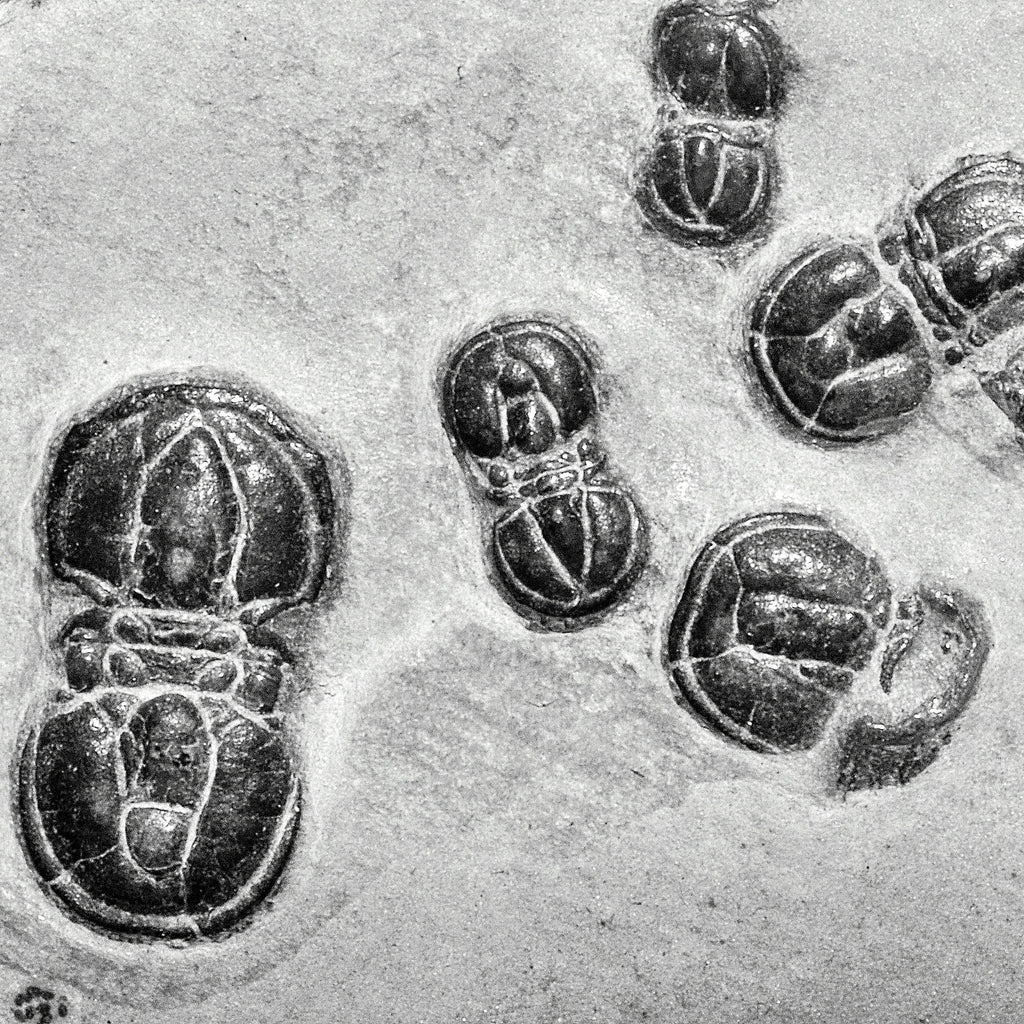
Triliobites are a varied group of marine arthropods which first appear in the early Cambrian period (540-490 million years ago) and went extinct in the Permian mass extinction.
My first up close encounter with the vast array of trilobites was over two decades ago at the American Natural History Museum in New York City. I was astonished by the huge variety of a group of successful marine arthropods that went extinct. This moment triggered my veracious appetite for the brilliant writings of two important palaeontologists, the late Stephen Jay Gould and Niles Eldredge. Eldredge has written some of the most insightful and eloquent work on trilobites and the role of variability in evolutionary biology (and culture!) - he was also generous enough to read (some of) my abstruse PhD thesis!




At the time of this encounter, I was working in the fashion industry and constantly confronted with massive amounts of variety even as we speak of 'timelessness' and recurring 'classics'. What interested me was the way in which variability could be thought about analytically as a longer term process which produces unique patterns rather than iconic types. But who analogises from the biological to the cultural when they are radically, operationally different physical things? So I shelved what was a seemingly a supercilious idea. I was not to know at the time, however, that my encounter would have such an enduring impact on my outlook, my philosophical questioning and my later academic pursuits.
As I was developing my thesis topic after many years of ongoing studies in art history and philosophy, questions about the form, shape, rate and intensity of time and change in human cultural behaviour began to take centre stage. My experience in clothing design and the range of academic material I have gravitated towards over the years fell into place. Bringing all of this together in writing took some 9 years! Whilst my research was about the operations of cultural evolution - examined via a long, winding path of continental philosophy - my immersion in evolutionary theory from the biological sciences was unavoidable.

Engaging in an enterprise of this scale changes you. So it was not surprising the way in which my collections of marine and fossilised life forms began to take on a different aesthetic point of view when I tinkered with them and gave them a personal, modernist touch - abstracted, minimalist, sleek. Although I remain fixated on trilobites, I have extended my obsession a little further to bring back to 'life' through gemstone carvings, some of the smaller life forms (contra dinosaurs!) that went extinct in the randomness of histories and interventions (see story about Dickinsonia)







